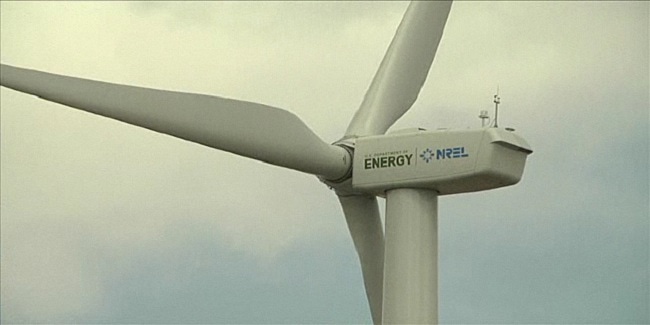A wind farm consists of a number of individual wind turbines present in the same region and are used for producing electric power. A large wind farm includes hundreds of wind turbines that cover a large area. A major advantage of a wind farm is that the space between each turbine can be used for farming and other purposes. The wind farm may be located both onshore and offshore.
Most of the largest wind farms in the world are located in China and the USA. The total capacity of China's Gansu Wind Farm is more than 5,000 MW and the country is planning to increase the capacity of the farm to 20,000 MW by 2020. The largest onshore wind farm in the USA is the Alta Wind Energy Center located in California and is capable of generating 1020 MW of power. As of February 2012, the 600 MW Fântânele-Cogealac Wind Farm located in Romania is the largest onshore wind farm in Europe and the 367 MW Walney Wind Farm in the UK is the world's largest offshore wind farm.
The environmental impact of wind energy is very low when compared to that of other traditional energy sources. Unlike thermal energy, wind power is pollution-free and the energy required to produce and transport the materials used for constructing wind turbines can be restored by the plant within a short period.
Planning a Wind Farm
The key steps in the planning of a wind farm are listed below:
- Municipal consultations before undertaking the project will help in the development of the project.
- Evaluation of wind resource, wind speed and other climatic conditions. Wind speed is very crucial and the more exposed a site is, the more electricity it generates through a wind farm
- Gathering the topological information and wind data used for controlling sound levels, turbine performance and wind flow. Information about local electric network turbine foundations, access roads and connection to electricity grids will also be helpful.
- Environmental assessments for determining impacts on water, soil, plants, landscape or wildlife. The farm location or design can be adjusted in case of any negative impacts.
- Securing land access to avoid negotiation of lease or royalty agreements and agreements with respect to turbines, maintenance infrastructure, transmission equipment and roads. These agreements should be discussed with all parties involved in the project.
- Analyzing the economic viability of the project in order to raise funds and build the turbine. The estimation helps in determining the cost of the turbines, installation costs, cost of operation, maintenance, electrical systems and roads, and also the net revenue to be collected from the energy production of the turbines.
Construction, Operation, and Maintenance
Wind farm construction is quite similar to all other construction projects. A hole is excavated for each wind turbine and filled with reinforced concrete that acts as a stabilizing foundation. Foundation is very important in offshore wind farms or rocky environments. While the crews start preparing the wind farm site, the newly manufactured and assembled wind turbines are shipped to the site. The turbines are then erected in the foundation with special hoists. It should be made sure that contractors follow the conditions and standards stipulated during the planning phase. Although the actual building process takes place in only about 2 to 4% of the land, care should be taken to avoid any negative impact in the rest of the land area.
During construction, access to the site must be restricted to construction personnel and other formalities should be undertaken to avoid queries from the public. In addition, an individual must be appointed by the site manager to update the public about the progress of the construction project. It usually takes about six months for the wind turbines to become fully operational.
The wind farm once set has to be thoroughly tested before starting its operation. It is necessary to ensure that all the components including electrical wirings and other systems are operating properly. In a year, each wind turbine would require routine maintenance work for a week. Proper conditional monitoring should be carried out throughout the life span of the wind turbines. Environmental surveys, maintenance work, monitoring and performance analysis of the wind turbines have to be carried out on regular basis. Also, it is important to return the wind farm site closely to its original form during the end of the working life of all turbines.

Image Credits: nrel.gov
How to Avoid Common Pitfalls
The following are some of the ways to avoid common risks associated with wind farm development:
- Advice from an experienced consultant is mandatory during the feasibility study before planning for the construction to avoid under or over estimation of energy production.
- Clear records defining the operating responsibilities and cost of project along with the mutual agreements from all the parties involved are important as poor drafting may interfere with the progress of the project.
- Wind resource assessment with respect to turbine size and financial assessment must be carried out before purchasing wind turbines as a small change in wind speed could severely influence the amount of energy generated.
- Grid capacity and grid connection feasibility studies need to be carried out to avoid any impact on the local grid network and alleviate the grid connection costs.
- In order to get rid of low feed-in tariff rate, it is very important to prepare robust planning application and related environmental documentation.
- Appropriate information regarding warranty details and contact references for analyzing service and performance of the turbine are important as the cost and performance of the product varies from one manufacturer to the next.
Sources and Further Reading